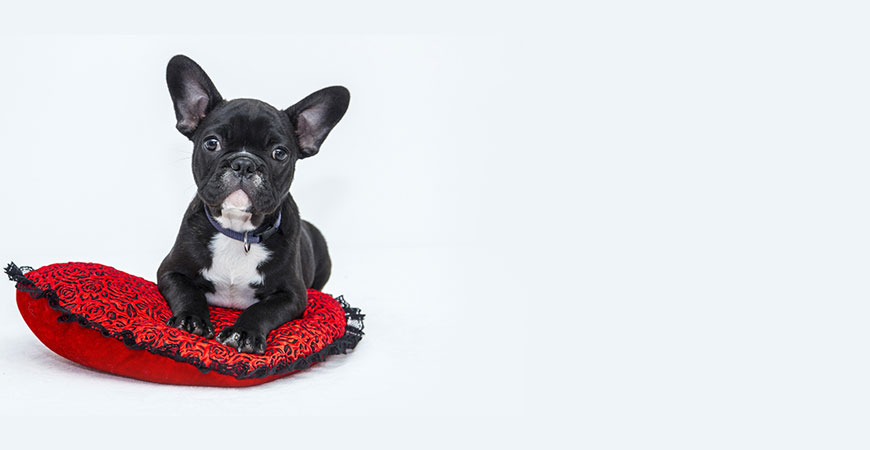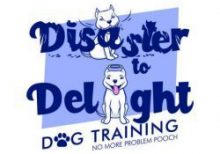Why Is Training Important?
Training is an important part of any dog’s life
Training your dog is more then just the basic obedience cues such as 'Sit' and 'Stay', it is also about teaching your dog to cope in our crazy, busy world, make the right choices, to be confident in all situations, to play with people and other animals appropriately and so much more.
Have you ever wondered what it cost not to train? Dogs who lack training will become bored, stressed and anxious resulting in destructive behaviours, excessive barking, inappropriate urination and dangerous behaviour to people and other animals.
Our programs are a responsible investment for all families in this forever changing world. They identify and address the behaviour issues directly using the most up to date, non - confrontational techniques, games and information tailored to you and your dogs needs plus training equipment.
Not only will our programs modify undesired behaviours, they will help you understand what your dog is trying to communicate with you setting you both up for success in the future preventing any more issues from occurring.
Dogs, as smart as they are, they cannot learn to speak English fluently, so we, as their leader need to learn to speak Dog fluently. Many behavioural issues families face are often a result of miscommunication between humans and dog. With the correct information, delivered and communicated properly, patience and consistency, most (if not all) common behaviour issues could be nothing more then a memory.


Multiple Dog Households
Before adding another dog to your household, you should consider the other animals in your family and
your living arrangements. Puppy’s take up a large portion of time when they first arrive in their new home,
do you enough time for this commitment? Training is more difficult with two dogs, do you have the
patience to train two dogs effectively?
Social relationships between two dogs largely depend on the individual personality of each dog.
Research your current dogs breed and your potential new addition to see how they will interact. This is just
a guide, you and environmental factors will influence the encounter. Avoid selecting a dog of similar social
stature and age. Opposite sex pairs are less likely to have conflict.
A trial period of gradual, supervised interactions is recommended to make sure the dog’s get along.
Living in a multi-dog household can be very rewarding for both animal and human, you will need to
consider the physical and emotional impact it will have on your current dog or dogs. An important question
to ask yourself is ‘Am I getting a new puppy for myself or for my dog?’ if your response is not ‘I’m getting a
new puppy for both me and my dog’ it is best to refrain from getting a puppy. A young, playful and bouncy
puppy may be overwhelming to a senior or debilitated dog. Relationships will have to be established and
interactions controlled and managed. In fairness to your current dog, you have to intervene and teach a
pushy puppy what is appropriate through redirection and reward.
Do you have the time and financial resources to care for an additional puppy without jeopardizing your
current dogs care and time? Generally the new puppy will monopolize majority of your time and attention,
leaving your current feeling left out. The more dogs you have the greater these stresses are felt.
Reality is that at some point not all dogs are going to get along. Aggression is more likely when resources
are limited or social relationships are changing or unestablished. Some grovelling and grumbling are
normal dog communications and allowed. Active fights are damaging to canine social relationships and
negatively affect the human-animal bond.
Many dogs are happy to meet unfamiliar dogs off their property but may be different when a dog moves in
permanently. Ensure each dog has their own space in the house. Does your floorplan allow for multiple
dogs? Amazingly many dogs have a remarkable ability to coexist and get along. Multi-dog households can
be rewarding for human and canine counterparts when managed appropriately. Social relationships
between dogs are not based on equality or democracy. Consistency and predictability of human-dog
interactions, training and a set daily routine will keep the canine family happy and harmonious.
These recommendations are important for the prevention of future problems
Avoid access to objects that are likely to guarded when the dogs are in each-others presence. Items
may include but not be limited to chew toys, pig’s ears and favourite bedding
Prevent and/or manage competition over meals by feeding at set times with different locations of
the house allocated to each dog. Mealtime can be a time of high arousal, if you are unable to
manage multiple dogs are meal prep time, utilise a crate.
Provide separate beds in various locations through out the house. Forcing dogs to sleep next to
each other can lead to future problems. Allow adequate space between inside beds and outside
kennels to allow individuality.
Leash walk the dogs together twice a day off the property. This positive time together allows for
social bonding between dogs. If you cannot walk multiple dogs together in a positive manner get
assistance from a family member or friend to walk with you and revisit leash training.
Train dogs individually each day. A well trained dog is more relaxed and more easily redirected in
any situation. Provide both physical and mental stimulation through games and training
Children and Dogs
Growing up with a dog is great for a child’s health and development. A family dog can boost children’s
immunity, reduce allergies, improve self-esteem, improve social skills, teach compassion and empathy.
These children are more likely to share, to show consideration for others and genuinely be happier. A
family dog provides companionship, love, trust and responsibility.
Children and dogs need to learn each-others language, they both rely on us adults to keep them safe and
secure. The majority of dog bites involve young children inflicted by a family or familiar dog and many bites
are on the face region. Every dog has the potential to bite, even the most well trained and socialised dog
can bite. Pain, illness or an uncertain situation can promote a normally calm tolerate dog to bite. Be
realistic with your expectations of both children and dogs. Dogs cannot be expected to never to get angry
or frustrated at some point. It is unrealistic to expect your puppy to tolerate inappropriate behaviour.
Provide your dog with a safe zone where the children cannot access. Teach your child how to approach and
interact with dogs appropriately. Teach your child to respect the rules regarding the dog. Never leave your
child unattended with your dog, it only takes a quick second for something to go wrong. Behaviourally dogs
will normally get up and walk away from a confrontation (child irritating dog), it is up to the parents to
intervene if they see this and teach the child what is appropriate.
When bringing a baby home to an existing dog be mindful that the dog does not know that the baby is a
human, the sudden jerky movements of the limbs combined with the crying can over stimulate a dog to
play, nip or bite. Introduce your new baby to your dog on neutral ground (in the front yard).
Precursor’s of aggressive behaviour particularly toward children include
Lack of obedience training
Little to no socialisation with small children
Resource guarding – aggression over food, toys and places
Being overly sensitive to touch or fearful of people
A history of preying on small animals or aggression to family members
To reduce the risk of injury to your child and stress on the dog make sure you do the following
Teach your child to leave dogs alone that are resting, sleeping, eating, eliminating, hiding, drinking
or chewing a toy or bone
Teach your child to approach dogs calmly and appropriately
Avoid allowing your child to hug and kiss your dog’s head
Socialize your puppy from the start with small children
Train your dog foundation cues – Sit, Down, Stay, Come and Watch / Look
Behaviours children should avoid around dog’s and puppy’s
Rough play, petting or handling including pulling ears, fur, tail or feet
Running or chasing the dog, especially with Wild Arms (arms splaying everywhere)
Crawling, climbing on or laying on the dog
Reaching to pet unfamiliar or neighborhood dogs
Teasing, taunting, growling or barking at the dog
Verbal or physical reprimands
Fifty-five percent of children are more likely to suffer post-traumatic stress disorder after a
substantial bite. Observe your dog for appeasement or conflict behaviours as these are usually
precursors to aggression and intervene as soon you witness inappropriate behaviour from either
dog or child. Teach them safe and right from the start.


